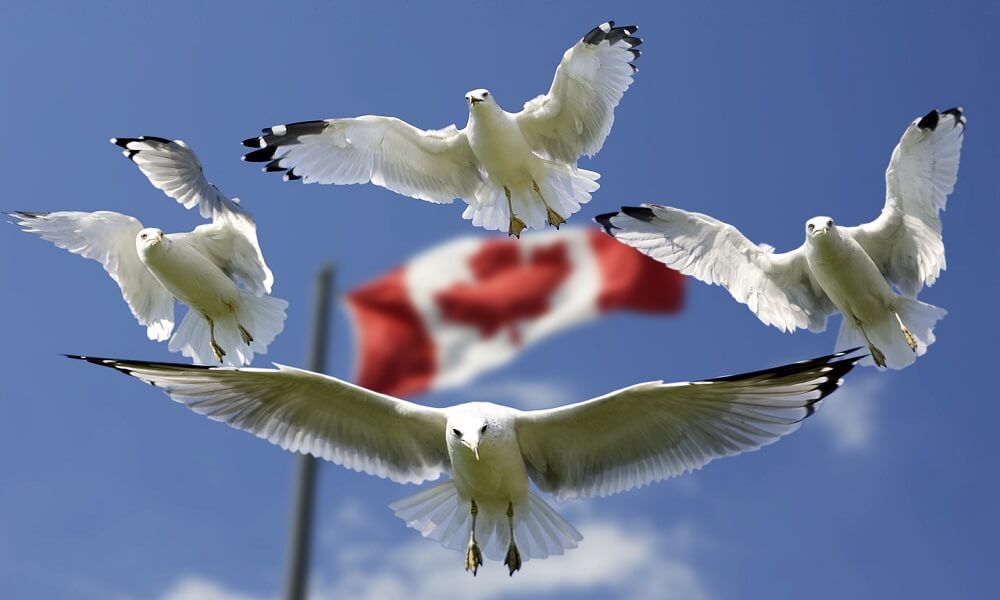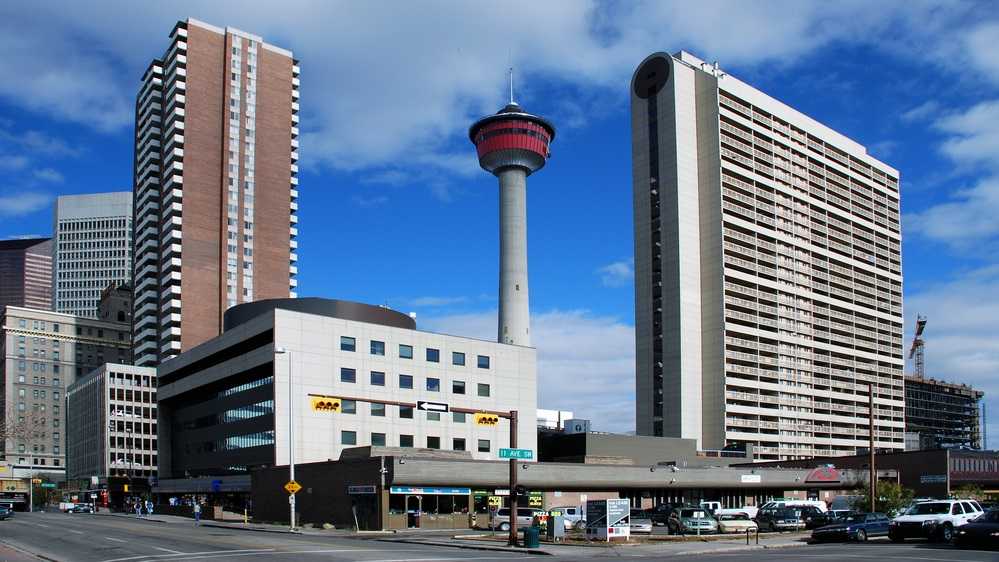Planning a trip to Canada, the land of the Northern Lights, enchanting wilderness, and multicultural cities, can be exciting. Read on as we unlock the hidden treasures of the Great White North in this ultimate Canada travel guidelines. From the majestic Rocky Mountains to the stunning coastal landscapes of the Atlantic and Pacific, Canada offers a wealth of natural wonders waiting to be discovered.
Immerse yourself in the vibrant culture of cosmopolitan cities like Toronto, Vancouver, and Montreal, where you can indulge in world-class cuisine, explore diverse neighbourhoods, and embrace a melting pot of traditions. Experience the thrill of wildlife encounters as you spot bears, moose, and whales in their natural habitats.
Canada has it all, whether you’re seeking outdoor escapades, cultural immersion, or simply a serene escape in the midst of nature. Get ready to embark on an unforgettable journey filled with breathtaking scenery, warm hospitality, and unforgettable memories. The Great White North awaits your exploration.
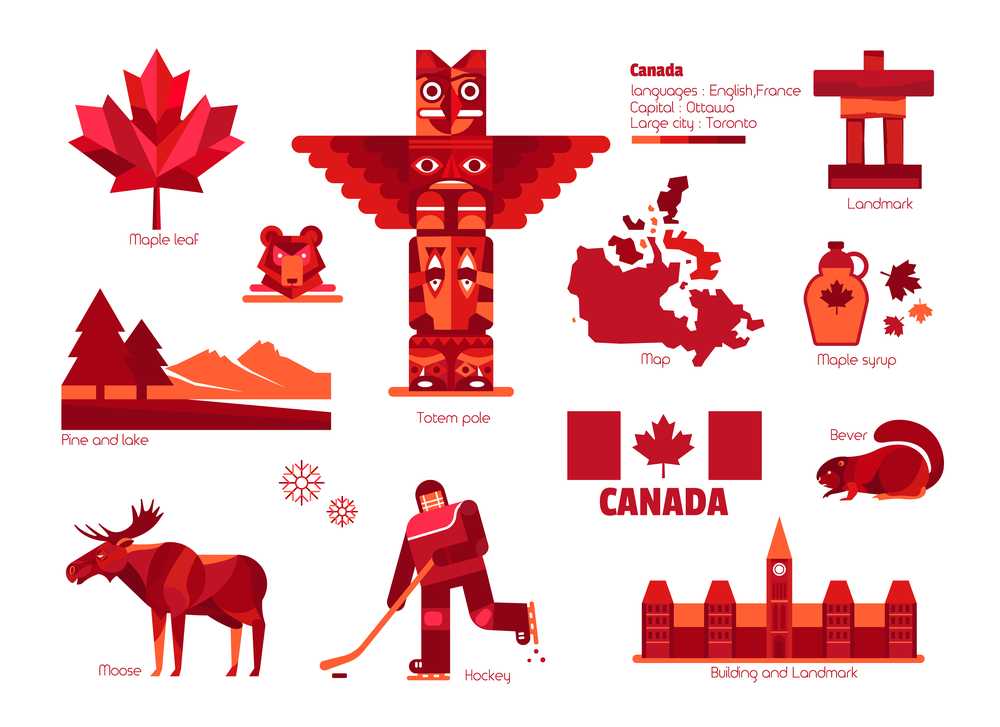
Canada’s Diverse Landscape and Attractions
Canada’s vast and diverse landscape is a playground for outdoor enthusiasts and nature lovers. From the rugged coastline of Newfoundland to the pristine lakes of Alberta, the country offers a multitude of breathtaking natural wonders. The Rocky Mountains, spanning across Alberta and British Columbia, boast majestic peaks, sparkling glaciers, and turquoise lakes that will leave you speechless. Whether you’re hiking through the trails of Banff National Park, skiing in Whistler, or kayaking on Lake Louise, the beauty of the Canadian Rockies is unparalleled.
But Canada’s natural beauty isn’t limited to its mountains. The country is also home to stunning coastlines, such as the Cabot Trail in Nova Scotia and the Pacific Rim National Park Reserve in British Columbia. These coastal regions offer a chance to witness the power of the Atlantic and Pacific Oceans, explore hidden coves, and spot marine wildlife like whales and seals. In addition, Canada boasts a vast network of rivers and lakes, perfect for fishing, canoeing, and kayaking adventures.
Weather and climate in Canada
Given its vast size, Canada experiences a wide range of climates. The country is divided into six climate regions: Arctic, Subarctic, Continental, Pacific Maritime, Prairie, and Atlantic Maritime.
In the Arctic and Subarctic regions, temperatures can drop well below freezing, especially during the winter. However, during the summer months, the Arctic experiences the phenomenon of the midnight sun, where the sun remains visible for 24 hours, providing unique opportunities for exploration.
The Continental region, which includes major cities like Toronto and Montreal, experiences hot summers and cold winters. Spring and fall bring mild temperatures and colourful foliage.
On the west coast, the Pacific Maritime region enjoys mild temperatures year-round, with rainy winters and dry summers. Vancouver is known for its temperate climate, making it a popular destination for outdoor activities.
The Prairie region, which encompasses Alberta, Saskatchewan, and Manitoba, experiences a continental climate with hot summers and cold winters. Thunderstorms are common during the summer months.
The Atlantic Maritime region, including provinces like Nova Scotia, Newfoundland, and Labrador, is characterized by cool summers and mild winters. The region is known for its rugged coastline and picturesque fishing villages.
The best time to visit Canada
The best time to visit Canada depends on the region you plan to explore and the activities you want to engage in. Summers, from June to August, are generally the most popular time to visit, as the weather is favourable and nature is in full bloom. This is the perfect time for hiking, camping, and exploring national parks. However, summer is also the busiest season, so be prepared for larger crowds and higher prices.
If you’re interested in winter activities like skiing, snowboarding, or dog sledding, then the months of December to February are ideal. The Canadian Rockies offer world-class ski resorts with breathtaking mountain vistas. The colder months also provide an opportunity to witness the mesmerizing Northern Lights in regions like Yukon or Northwest Territories.
For those seeking a balance between good weather and fewer tourists, the shoulder seasons of spring (April to May) and fall (September to October) offer pleasant temperatures and stunning landscapes. During these times, you can witness the vibrant fall foliage or the awakening of nature after a long winter.

Travel Tips for Canada
Planning a trip to Canada requires careful consideration of various factors, including the duration of your stay, your budget, and the activities you want to experience. Here are a few essential steps to help you plan your Canadian adventure:
- Research and Destination Selection: Start by researching the different regions of Canada and their unique attractions. Consider your interests and preferences to narrow down your options. Are you more drawn to cosmopolitan cities, national parks, or coastal towns? Once you have a general idea, choose your main destinations.
- Entry Requirements: Check the entry requirements for Canada, including visa regulations and any necessary permits. Ensure that your passport is valid for the duration of your stay, and review the latest travel advisories.
- Booking Flights: Look for the best flight deals to your chosen destinations in Canada. Consider flying into major airports like Toronto Pearson International Airport or Vancouver International Airport for convenient access to various regions.
- Accommodation: Research and book your accommodation in advance to secure the best options and rates. Canada offers a wide range of options, from luxury hotels to cozy bed and breakfasts or even camping grounds within national parks.
- Transportation: Consider how you will get around in Canada. If you plan to explore multiple regions, renting a car may be the most convenient option. Alternatively, you can rely on public transportation, including trains and buses, which are well-connected across the country.
- Activities and Attractions: Make a list of the activities and attractions you want to experience in each destination. Research their opening hours, any necessary reservations, and the best times to visit. This will help you create a rough itinerary for your trip.
By following these steps and doing thorough research, you’ll be well-prepared to make the most of your time in Canada and ensure a smooth and memorable journey.
Best places to visit in Canada: Toronto, Vancouver, Montreal, and more
When it comes to Canadian cities, there are several vibrant and diverse destinations that should be on your must-visit list. Here are a few of the most popular and iconic cities in Canada:
- Toronto: Canada’s largest city, Toronto, is a bustling metropolis known for its multiculturalism and vibrant cityscape. Explore the iconic CN Tower, stroll along the waterfront at Harbourfront Centre, or immerse yourself in the arts and culture scene at the Royal Ontario Museum or the Art Gallery of Ontario.
- Montreal: As the largest city in the province of Quebec, Montreal offers a unique blend of French and English cultures. Discover Old Montreal with its cobblestone streets and historic buildings, visit the impressive Notre Dame Basilica, or indulge in the city’s renowned culinary scene.
- Vancouver: Nestled between the Pacific Ocean and the Coastal Mountains, Vancouver is a city that seamlessly combines urban amenities with breathtaking natural beauty. Explore Stanley Park, visit Granville Island’s bustling market, or take a scenic drive along the Sea-to-Sky Highway to Whistler.
- Quebec City: Step back in time and explore the historic charm of Quebec City. Wander through the narrow streets of Old Quebec, a UNESCO World Heritage Site; visit the iconic Chateau Frontenac, or enjoy a leisurely stroll along the picturesque Terrasse Dufferin.
- Calgary: Calgary is located in Western Canada. Known as the gateway to the Canadian Rockies, Calgary offers a perfect blend of urban sophistication and outdoor adventure. Experience the city’s western heritage at the Calgary Stampede, explore the charming neighbourhood of Inglewood, or take a day trip to Banff National Park.
- Ottawa: Other notable cities worth visiting include Ottawa, the capital of Canada, known for its impressive Parliament Buildings and the Rideau Canal, a UNESCO World Heritage Site.
These cities are just a taste of what Canada has to offer. Each one has its own unique charm and attractions, ensuring there’s something for every type of traveller.
Explore Canada’s National Parks and Natural Wonders
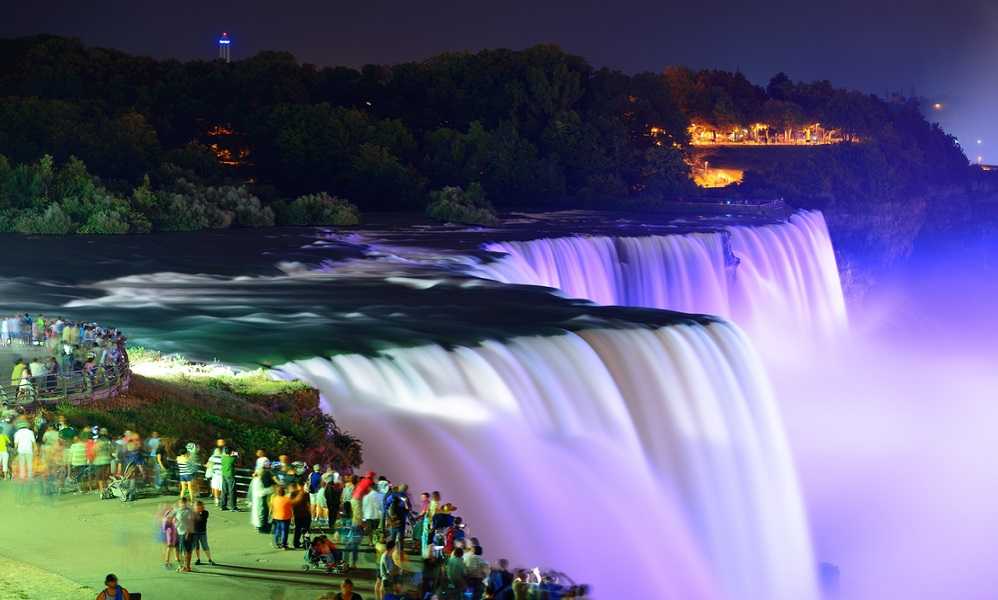
One of the highlights of any trip to Canada is the opportunity to explore its vast network of national parks and natural wonders. With 48 national parks and reserves, there’s no shortage of awe-inspiring landscapes to discover. Here are a few must-visit national parks in Canada:
- Banff National Park: Located in the heart of the Canadian Rockies, Banff National Park is a true natural wonderland. Marvel at the turquoise waters of Lake Louise, hike to the stunning Moraine Lake or take a dip in the soothing Banff Upper Hot Springs.
- Jasper National Park: Adjacent to Banff, Jasper National Park offers equally breathtaking scenery. Explore the stunning Icefields Parkway, home to glaciers and cascading waterfalls, or spot wildlife like bears and elk while hiking through the park’s extensive trail network.
- Pacific Rim National Park Reserve: Situated on Vancouver Island, the Pacific Rim National Park Reserve is a coastal paradise. Walk along the sandy beaches of Long Beach, go surfing in Tofino, or embark on a kayaking adventure through the Broken Group Islands.
- Gros Morne National Park: Located in Newfoundland and Labrador, Gros Morne National Park is a UNESCO World Heritage Site. Discover the unique geology of the Tablelands, hike through fjords and forests, or take a boat tour to spot whales and seabirds.
- Dinosaur Provincial Park in Alberta: The Dinosaur Provincial Park in Alberta is a UNESCO World Heritage Site and a haven for paleontologists and dinosaur enthusiasts. Embark on a guided tour to uncover fossils, learn about the prehistoric creatures that once roamed the area, and explore the unique Badlands landscape.
- Great Bear Rainforest: In British Columbia, this is a must-visit for wildlife enthusiasts. This pristine wilderness is home to grizzly bears, black bears, wolves, and bald eagles. Take a guided tour to spot these majestic creatures in their natural habitat and learn about conservation efforts in the region.
- The Cabot Trail in Nova Scotia: On the eastern coast, the Cabot Trail in Nova Scotia offers spectacular views of the Atlantic Ocean, rugged cliffs, and charming coastal villages. Keep an eye out for whales and seabirds as you drive along this scenic route.
These attractions are just a few examples of things to see and natural wonders that await you in Canada. Each park offers a unique experience, whether it’s hiking, wildlife spotting, or simply immersing yourself in the beauty of unspoiled nature.
Explore Canada: Culture and Traditions
Canada’s rich cultural heritage is a blend of Indigenous, French, English, and immigrant influences. To truly experience the essence of Canada, immerse yourself in its diverse cultures and traditions. Here are a few ways to do so:
- Indigenous Experiences: Canada is home to a vibrant Indigenous culture, with over 600 distinct First Nations. Consider participating in a cultural tour or visiting an Indigenous community to learn about their traditions, art, and history.
- Culinary Delights: Indulge in Canada’s diverse culinary scene, which draws inspiration from its multicultural population. Try poutine in Quebec, sample fresh seafood on the East Coast, or savour regional specialties like Nanaimo bars in British Columbia.
- Historical Sites: Explore Canada’s rich history by visiting its numerous historical sites and landmarks. From the iconic Parliament Hill in Ottawa to the historical sites of Quebec City, there’s a wealth of stories and heritage to discover.
By immersing yourself in Canadian culture and traditions, you’ll gain a deeper appreciation for the country’s history and diversity.
Canadian festivals: Way to explore Canada more

1. Quebec Winter Carnival: A Winter Wonderland
Every year, the historic city of Quebec transforms into a magical winter wonderland for the Quebec Winter Carnival. As one of the largest winter carnivals in the world, it draws visitors from across the globe, eager to experience its unique offerings. From a majestic ice palace that lights up the night to high-adrenaline activities like snow rafting and ice canoe races, the festival embodies winter’s joy. The grand night parade, snow sculptures, outdoor dance parties, and traditional foods like beaver tails and tire sur la neige (maple syrup taffy) provide endless entertainment for all ages.
2. Calgary Stampede: Embrace the Cowboy Culture
The Calgary Stampede, known as ‘The Greatest Outdoor Show on Earth,’ is a vibrant ten-day event celebrating Western Canada’s cowboy culture. The city of Calgary comes alive with exciting rodeo events, heart-pounding chuckwagon races, and captivating displays of traditional First Nations crafts and dances. Visitors can enjoy delicious Western-style foods and exciting amusement park rides, and even try their hand at line dancing. The Stampede is more than a festival—it’s a Canadian tradition that embraces community spirit, competition, and a love for Western heritage.
3. Celtic Colours International Festival: Journey Through Celtic Roots
The Celtic Colours International Festival is a unique celebration of Cape Breton Island’s rich Celtic heritage. Over nine days in October, the festival treats visitors to a feast of music, dance, workshops, community suppers, and storytelling against the backdrop of Nova Scotia’s breathtaking fall foliage. Visitors can attend lively ceilidhs (gatherings), where locals and guests share stories, music, and dance. The festival culminates with a grand finale concert featuring performances by some of the biggest names in Celtic music.
4. Toronto Caribbean Carnival (Caribana): A Caribbean Fiesta
Celebrating the vibrant culture of the Caribbean diaspora, the Toronto Caribbean Carnival, or Caribana, is a spectacle of colour, music, and flavours. The highlight of this summer festival is the Grand Parade, where masqueraders in dazzling costumes dance to the infectious rhythms of soca and calypso. The city buzzes with art exhibitions, Caribbean music concerts, and mouthwatering street food, offering a taste of the Caribbean in the heart of Toronto.
5. Yukon Sourdough Rendezvous: Frontier Fun under the Northern Lights
Held in the depths of winter, the Yukon Sourdough Rendezvous celebrates Canada’s far north’s rugged charm and resilience. The festival features a range of quirky and unique events that harken back to the gold rush era, from beard-growing contests to flour-packing championships and dog sled races. All this is set under the ethereal glow of the Northern Lights, offering a truly unique Canadian experience.
6. Prince Edward Island International Shellfish Festival: A Seafood Spectacular
The Prince Edward Island International Shellfish Festival is an annual, four-day celebration of the island’s world-famous shellfish. A culinary extravaganza, the festival features cooking demonstrations from celebrity chefs, shellfish shucking championships, and tastings of the freshest seafood. Attendees can enjoy a delicious variety of oysters, mussels, and lobster while taking in live music and participating in interactive culinary events. This festival is a must-visit for any seafood lover.
7. Dawson City Music Festival: Echoes of the Gold Rush Era
Tucked away in the heart of the Yukon, the Dawson City Music Festival is often called ‘Canada’s tiny, perfect festival.’ Held in a town steeped in gold rush history, the festival offers a delightful mix of music that cuts across genres, from folk and indie rock to traditional First Nations music. With stages set
Outdoor Activities and Adventures in Canada
Canada offers an abundance of outdoor activities. It’s an outdoor enthusiast’s paradise, offering a wide range of popular activities and adventures for every season. Whether you’re seeking thrilling experiences or peaceful communion with nature, Canada has it all. Here are a few outdoor activities to consider:
- Hiking and Camping: Lace up your hiking boots and explore the countless trails that crisscross Canada’s national parks. From short and scenic walks to multi-day backcountry adventures, there’s a hike for every fitness level and interest. Camping options range from well-equipped campgrounds to remote wilderness camping.
- Skiing and Snowboarding: Canada is renowned for its world-class ski resorts, particularly in the Rocky Mountains. Whistler Blackcomb in British Columbia and Banff Sunshine Village in Alberta offer excellent opportunities for downhill skiing and snowboarding. Cross-country skiing and snowshoeing are popular winter activities as well.
- Wildlife Encounters: Canada is home to a vast array of wildlife, including bears, moose, whales, and eagles. Embark on wildlife tours or take a scenic drive through areas known for their abundant wildlife. Churchill, Manitoba, is famous for its polar bear viewing opportunities.
- Water Activities: Canada’s lakes, rivers, and coastlines provide ample opportunities for water-based activities. Try kayaking or canoeing on tranquil lakes, go white-water rafting on fast-flowing rivers, or embark on a whale-watching excursion along the coast.
These are just a few examples of the outdoor activities that await you in Canada. Whether you’re seeking adrenaline-pumping adventures or serene moments in nature, the Great White North has something for everyone.
Unique Experiences in Canada
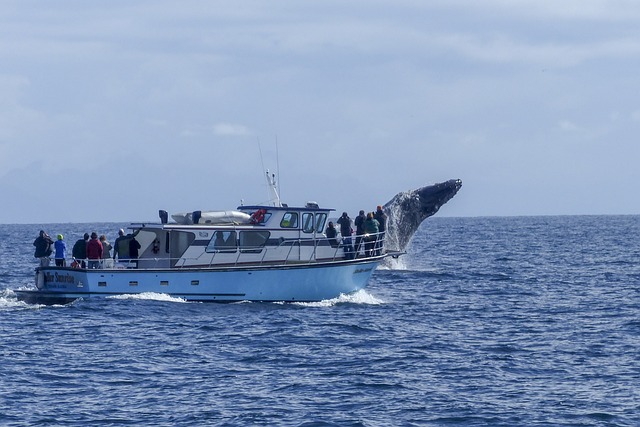
In addition to its natural wonders and outdoor adventures, Canada offers a range of unique experiences that will make your trip truly unforgettable. Here are a few experiences to consider adding to your itinerary:
- Polar Bear Viewing in Churchill: Journey to Churchill, Manitoba, the polar bear capital of the world, and witness the majestic polar bears in their natural habitat. Join a guided tour to see these incredible creatures up close and learn about their conservation.
- Dog Sledding in the Yukon: Experience the thrill of dog sledding through the snowy landscapes of the Yukon. Learn to mush your own team of huskies and explore the stunning wilderness of Canada’s northern regions.
- Whale Watching in British Columbia: Take a boat tour off the coast of British Columbia and spot majestic whales, such as Orcas and Humpbacks. The waters around Vancouver Island are known for their abundant marine life, making it a prime destination for whale watching. Also, head to places like Cape Breton Island or Newfoundland in the Atlantic provinces to spot humpback whales, minke whales, and even the endangered North Atlantic right whale. Vancouver Island and the Gulf Islands offer excellent opportunities to see orcas, grey whales, and other marine mammals on the west coast.
- Helicopter Tours: Consider taking a helicopter tour for a unique perspective of Canada’s vast landscapes. Fly over glaciers, waterfalls, and mountains, and witness the country’s sheer beauty from above.
- See the Moose: The moose is another iconic symbol of Canada. These magnificent creatures can be found in various provinces, including Newfoundland and Labrador, Nova Scotia, and Ontario. Keep an eye out for them near bodies of water or in forested areas.
These unique experiences offer a chance to create lifelong memories and discover the hidden gems of Canada.
Places to Stay in Canada
Canada offers a wide range of accommodation options to suit every budget and preference. Whether you prefer luxury hotels, cozy bed and breakfasts, or camping under the stars, there’s an option for you. Here are a few popular choices:
- Hotels and Resorts: Canada’s major cities and tourist destinations are home to a variety of hotels and resorts, ranging from budget-friendly to luxurious. Look for accommodations that offer convenient access to the attractions you want to explore.
- Bed and Breakfasts: Consider staying at a bed and breakfast for a more intimate and personalized experience. These charming establishments often provide homemade breakfasts and a cozy atmosphere.
- Hostels: Ideal for budget travellers, hostels offer affordable accommodation and the opportunity to meet fellow travellers. Many hostels in Canada provide private rooms or family-sized dormitories.
- Camping: Canada’s national parks and provincial parks offer numerous camping options. From well-equipped campgrounds with modern facilities to remote wilderness camping, you can choose the level of comfort and seclusion that suits your preferences.
When booking accommodations, consider the location, amenities, and reviews to ensure a comfortable and enjoyable stay; and it’s advisable to book accommodations in advance, especially during peak travel seasons.
Must-try Canadian cuisine and local dishes
No trip to Canada is complete without indulging in some of the country’s unique culinary delights. Poutine, a dish originating in Quebec, is a must-try. It consists of French fries topped with cheese curds and smothered in gravy. Whether you prefer the classic version or variations with additional toppings like bacon or pulled pork, poutine is a Canadian comfort food staple.
Maple syrup is another iconic Canadian ingredient. Try it drizzled over pancakes or waffles, or indulge in maple syrup-infused treats like butter tarts or maple sugar candies.
If you’re a seafood lover, don’t miss the opportunity to try Atlantic lobster or Nova Scotia scallops. Both are known for their sweet and succulent flavours. Smoked salmon from British Columbia is also a popular delicacy.
For a taste of Canada’s indigenous cuisine, try bannock, a traditional bread made with simple ingredients like flour, baking powder, and water. It can be enjoyed on its own or served with toppings like butter, jam, or smoked salmon.
Planning your trip: Visa requirements and transportation
Before travelling to Canada, checking the visa requirements for your country of residence is important. Visitors from certain countries might need a visa or an Electronic Travel Authorization (eTA) to enter Canada. Make sure to apply well in advance to avoid any delays. Do you plan to migrate and work in Canada? You need to qualify for one of the programs that can bring you to Canada. For more information, try visiting the government of Canada’s immigration website.
Canada has a well-developed transportation system, making it easy to explore the country. Thanks to its well-developed transportation infrastructure. Here are a few transportation options to consider:
- Car Rental: Renting a car is a popular choice for exploring Canada, especially if you plan to visit multiple destinations or venture into remote areas. Most major cities and airports have car rental services available.
- Public Transportation: Canada’s major cities have extensive public transportation networks, including buses, subways, and light rail systems. Public transportation is a convenient and affordable way to get around urban areas.
- Trains: Via Rail operates passenger train services across Canada, offering scenic journeys and comfortable travel options between major cities. Experience the iconic transcontinental journey on the Canadian, which travels from Toronto to Vancouver.
Safety tips for travelling in Canada
Canada is generally a safe country to travel to, but taking precautions is always important. Keep your belongings secure, especially in crowded areas, and be aware of your surroundings. It’s advisable to have travel insurance that covers medical expenses, as healthcare can be expensive for non-residents.
If you’re planning outdoor activities, make sure to check the weather conditions and be prepared for changing weather. It’s also important to respect wildlife and their habitats by observing from a safe distance and following any guidelines provided by park authorities.
Budgeting for a trip to Canada
The cost of a trip to Canada can vary depending on factors such as accommodation, transportation, and activities. Major cities like Toronto and Vancouver tend to be more expensive, while smaller towns and rural areas offer more budget-friendly options.
To save money on accommodations, consider staying in hostels, camping grounds, or booking vacation rentals. Eating at local restaurants and street food stalls can also help keep costs down while still allowing you to sample delicious Canadian cuisine.
Keep in mind that some attractions and national parks may have entrance fees, so it’s important to budget for these additional costs. Researching and planning your itinerary in advance can help you allocate your budget accordingly.
Souvenirs and Shopping in Canada
Shopping in Canada offers a wide range of options, from high-end fashion boutiques to local artisan markets. In major cities like Toronto and Vancouver, you’ll find malls and shopping districts with a mix of international brands and local designers.
If you’re looking for unique souvenirs, consider purchasing items that showcase Canada’s cultural heritage. Indigenous artwork, such as dreamcatchers or hand-carved totem poles, makes for meaningful gifts. Canadian maple syrup, locally made chocolates, and iced wine are also popular choices.
For nature enthusiasts, consider taking home a piece of Canada’s natural beauty. Look for jewellery made with Canadian gemstones like ammolite or labradorite. Handmade soaps, candles, and skincare products crafted with natural ingredients are also a great way to bring a piece of Canada’s wilderness into your home.
Conclusion: Canada Travel guidelines
Undoubtedly, Canada is one of the best countries in the world. Its vast and diverse landscape, vibrant cities, and rich cultural heritage make it an ideal destination for travellers seeking adventure, natural beauty, and cultural immersion. From exploring the majestic Rocky Mountains to indulging in world-class cuisine in cosmopolitan cities, Canada offers something for everyone.
Whether you’re a nature lover, a food enthusiast, or a history buff, this ultimate Canada travel guide has provided you with a glimpse into the wonders that await you. Embark on an unforgettable journey to uncover the hidden treasures of the Great White North and let Canada’s breathtaking scenery, warm hospitality,

